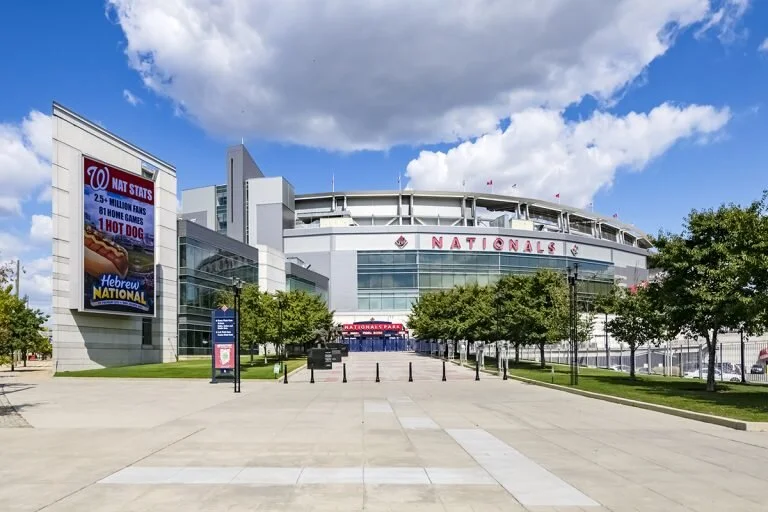Navy Yard is a neighborhood on the Anacostia River in Southeast Washington, D.C. Navy Yard is bounded by Interstate 695 to the north and east, South Capitol Street to the west, and the Anacostia River to the south.
Approximately half of its area (south of M Street, SE) is occupied by the Washington Navy Yard (including the Naval Historical Center), which gives the neighborhood its name. It is served by the Navy Yard – Ballpark Metro station on the Green Line. Historically, the Anacostia River was once a deep water channel with natural resources and home to the Nacotchtank Indians. In 1791 Pierre Charles L’Enfant designed the plan for Washington, D.C., and, recognizing the assets of the Anacostia River, located the city’s new commercial center and wharfs there. In 1799 the Washington Navy Yard was established in the area and for several decades was the nation’s largest naval shipbuilding facility. Today the Washington Navy Yard is the U.S. Navy’s longest continuously operated federal facility. Navy Yard was Washington’s earliest industrial neighborhood. One of the earliest industrial buildings was the eight-story brick Sugar House, built in Square 744 at the foot of New Jersey Avenue, SE as a sugar refinery in 1797-98. In 1805, it became the Washington Brewery, which produced beer until it closed in 1836. The brewery site was just west of the Washington City Canal in what is now Parking Lot H/I in the block between Nationals Park and the historic DC Water pumping station.
The Navy Yard was a bustling nautical center during the 19th century and played an integral role in the development of the area. The lively wharf was a hub for jobs, serving ships with lumber and raw materials for the growing city. It also played a key role in defending the city from the British during the War of 1812. Surrounding the wharfs was an extensive commercial district, light industrial businesses, and one of the city’s most significant neighborhood communities. As the city and nation evolved, the Navy Yard changed from shipbuilding to production of finished ship products and weapons ammunition. By the mid‑1940s the Navy Yard and the expanded Annex area reached peak production with 26,000 employees in 132 buildings on 127 acres of land. Long an industrial district, the neighborhood has undergone transformation since the 1990s. The construction of the U.S. Department of Transportation office complex and Nationals Park, the 2008 $600 million stadium of the Washington Nationals Major League Baseball team, have stimulated growth in the neighborhood. Most of the neighborhood’s land and businesses have been purchased by companies and is currently being developed into commercial and residential projects. Current plans are to construct 12 to 15,000,000 square feet of office space, 9,000 residential units, 1,200 hospitality rooms, 800,000 square feet of retail space, four public parks, and an Anacostia Riverwalk trail system.
[Source: Wikipedia]

